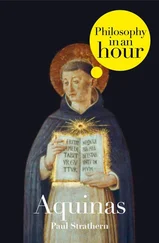Reply Obj. 2: If the soul of the Blessed Virgin had never incurred the stain of original sin, this would be derogatory to the dignity of Christ, by reason of His being the universal Saviour of all. Consequently after Christ, who, as the universal Saviour of all, needed not to be saved, the purity of the Blessed Virgin holds the highest place. For Christ did not contract original sin in any way whatever, but was holy in His very Conception, according to Luke 1:35: "The Holy which shall be born of thee, shall be called the Son of God." But the Blessed Virgin did indeed contract original sin, but was cleansed therefrom before her birth from the womb. This is what is signified (Job 3:9) where it is written of the night of original sin: "Let it expect light," i.e. Christ, "and not see it"—(because "no defiled thing cometh into her," as is written Wis. 7:25), "nor the rising of the dawning of the day," that is of the Blessed Virgin, who in her birth was immune from original sin.
Reply Obj. 3: Although the Church of Rome does not celebrate the Conception of the Blessed Virgin, yet it tolerates the custom of certain churches that do keep that feast, wherefore this is not to be entirely reprobated. Nevertheless the celebration of this feast does not give us to understand that she was holy in her conception. But since it is not known when she was sanctified, the feast of her Sanctification, rather than the feast of her Conception, is kept on the day of her conception.
Reply Obj. 4: Sanctification is twofold. One is that of the whole nature: inasmuch as the whole human nature is freed from all corruption of sin and punishment. This will take place at the resurrection. The other is personal sanctification. This is not transmitted to the children begotten of the flesh: because it does not regard the flesh but the mind. Consequently, though the parents of the Blessed Virgin were cleansed from original sin, nevertheless she contracted original sin, since she was conceived by way of fleshly concupiscence and the intercourse of man and woman: for Augustine says (De Nup. et Concup. i): "All flesh born of carnal intercourse is sinful." _______________________
THIRD ARTICLE [III, Q. 27, Art. 3]
Whether the Blessed Virgin Was Cleansed from the Infection of the
Fomes?
Objection 1: It would seem that the Blessed Virgin was not cleansed from the infection of the fomes. For just as the fomes, consisting in the rebellion of the lower powers against the reason, is a punishment of original sin; so also are death and other corporeal penalties. Therefore the fomes was not entirely removed from her.
Obj. 2: Further, it is written (2 Cor. 12:9): "Power is made perfect in infirmity," which refers to the weakness of the fomes, by reason of which he (the Apostle) felt the "sting of the flesh." But it was not fitting that anything should be taken away from the Blessed Virgin, pertaining to the perfection of virtue. Therefore it was unfitting that the fomes should be entirely taken away from her.
Obj. 3: Further, Damascene says (De Fide Orth. iii) that "the Holy Ghost came upon" the Blessed Virgin, "purifying her," before she conceived the Son of God. But this can only be understood of purification from the fomes: for she committed no sin, as Augustine says (De Nat. et Grat. xxvi). Therefore by the sanctification in the womb she was not absolutely cleansed from the fomes.
On the contrary, It is written (Canticles 4:7): "Thou art all fair, O my love, and there is not a spot in thee!" But the fomes implies a blemish, at any rate in the flesh. Therefore the fomes was not in the Blessed Virgin.
I answer that, on this point there are various opinions. For some have held that the fomes was entirely taken away in that sanctification whereby the Blessed Virgin was sanctified in the womb. Others say that it remained as far as it causes a difficulty in doing good, but was taken away as far as it causes a proneness to evil. Others again, that it was taken away as to the personal corruption, by which it makes us quick to do evil and slow to do good: but that it remained as to the corruption of nature, inasmuch as it is the cause of transmitting original sin to the offspring. Lastly, others say that, in her first sanctification, the fomes remained essentially, but was fettered; and that, when she conceived the Son of God, it was entirely taken away. In order to understand the question at issue, it must be observed that the fomes is nothing but a certain inordinate, but habitual, concupiscence of the sensitive appetite, for actual concupiscence is a sinful motion. Now sensual concupiscence is said to be inordinate, in so far as it rebels against reason; and this it does by inclining to evil, or hindering from good. Consequently it is essential to the fomes to incline to evil, or hinder from good. Wherefore to say that the fomes was in the Blessed Virgin without an inclination to evil, is to combine two contradictory statements.
In like manner it seems to imply a contradiction to say that the fomes remained as to the corruption of nature, but not as to the personal corruption. For, according to Augustine (De Nup. et Concup. i.), it is lust that transmits original sin to the offspring. Now lust implies inordinate concupiscence, not entirely subject to reason: and therefore, if the fomes were entirely taken away as to personal corruption, it could not remain as to the corruption of nature.
It remains, therefore, for us to say, either that the fomes was entirely taken away from her by her first sanctification or that it was fettered. Now that the fomes was entirely taken away, might be understood in this way, that, by the abundance of grace bestowed on the Blessed Virgin, such a disposition of the soul's powers was granted to her, that the lower powers were never moved without the command of her reason: just as we have stated to have been the case with Christ (Q. 15, A. 2), who certainly did not have the fomes of sin; as also was the case with Adam, before he sinned, by reason of original justice: so that, in this respect, the grace of sanctification in the Virgin had the force of original justice. And although this appears to be part of the dignity of the Virgin Mother, yet it is somewhat derogatory to the dignity of Christ, without whose power no one had been freed from the first sentence of condemnation. And though, through faith in Christ, some were freed from that condemnation, according to the spirit, before Christ's Incarnation, yet it does not seem fitting that any one should be freed from that condemnation, according to the flesh, except after His Incarnation, for it was then that immunity from condemnation was first to appear. Consequently, just as before the immortality of the flesh of Christ rising again, none obtained immortality of the flesh, so it seems unfitting to say that before Christ appeared in sinless flesh, His Virgin Mother's or anyone else's flesh should be without the fomes, which is called "the law of the flesh" or "of the members" (Rom. 7:23, 25).
Therefore it seems better to say that by the sanctification in the womb, the Virgin was not freed from the fomes in its essence, but that it remained fettered: not indeed by an act of her reason, as in holy men, since she had not the use of reason from the very first moment of her existence in her mother's womb, for this was the singular privilege of Christ: but by reason of the abundant grace bestowed on her in her sanctification, and still more perfectly by Divine Providence preserving her sensitive soul, in a singular manner, from any inordinate movement. Afterwards, however, at the conception of Christ's flesh, in which for the first time immunity from sin was to be conspicuous, it is to be believed that entire freedom from the fomes redounded from the Child to the Mother. This indeed is signified (Ezech. 43:2): "Behold the glory of the God of Israel came in by the way of the east," i.e. by the Blessed Virgin, "and the earth," i.e. her flesh, "shone with His," i.e. Christ's, "majesty."
Читать дальше












